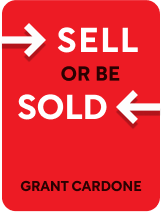

This article is an excerpt from the Shortform book guide to "Sell or Be Sold" by Grant Cardone. Shortform has the world's best summaries and analyses of books you should be reading.
Like this article? Sign up for a free trial here .
What are the steps to overcoming price objections? What myths about money should you be aware of when selling?
Overcoming price objections starts with establishing whether the customer lacks sufficient money or is simply uninterested in the product. The next step is to convince the customer about the value of the product and why it is worth twice the asking price. Misleading money myths like “people don’t like to spend” or that “money is always in short supply” can discourage you from pressing on to convince the customer.
Read on to learn more about the steps to overcoming price objections.
Price Objections in Sales
Once you’ve built a relationship with the customer and have her interested in a product, you’ll undoubtedly have to address money. In this chapter, we’ll look at some myths about money, overcoming price objections, and the phenomenon of “second money” (it’s easier to get people to spend more once they’ve already bought something).
Mythbusting Money
There are two myths associated with money that you need to be aware of when selling:
Myth #1: There’s a shortage. This is untrue—if we averaged all the money on the planet, everyone would have a net worth of $1 billion. If you don’t have your billion, it’s because you have the wrong attitude. Additionally, if there ever was a shortage of money, the government could print more.
Myth #2: People don’t like to spend. In fact, people do like to spend money because it lets them show off. U.S. culture is about consumerism and competition, and Americans like to buy things with an audience. The more people spend, the more fun they have, and the more they’ll like what they bought.
Overcoming Price Objections
Now that we’ve cleared up two myths about money, let’s tackle one that’s more specific to sales: the myth that the major reason customers won’t buy things is price. In reality, price is never anyone’s number-one concern—in fact, it’s never even among their top reasons. The real reason people don’t buy something is that they aren’t confident that the product is what they need or want.
- Example #1: If price were the only motivator, no one would buy Starbucks coffee when they could make coffee cheaper at home.
- Example #2: Most things aren’t actually necessary, so if people were really concerned about money, they wouldn’t buy products at all.
In fact, sometimes lowering prices hurts sales—when the price is low, people think the product is worthless.
- For example, one of Cardone’s salesmen thought he would be able to sell more tickets to one of Cardone’s seminars if the ticket prices were cheaper. Cardone let him lower the price on the condition that he wasn’t allowed to do his usual sales pitch (when you charge a low price, you can’t afford the usual in-person sales presentations). Attendance was abysmal—the low price made everyone think that Cardone wouldn’t be there in person and would just be attending via a video chat.
Therefore, to start overcoming price objections, you need to find out what your customer needs or wants and then show them how the product (or another part of your value proposition) will satisfy them. When people are confident and love or need something, they’ll find the money.
Here are the steps to overcoming price objections:
1. Don’t show a customer a less expensive product. If she didn’t like the first one, she probably won’t like the second either, and she’ll feel that you can’t actually help her and that the interaction is a waste of time.
2. Test whether she actually doesn’t have the money or just didn’t like the first product. Do this by offering her a different and more expensive product, which will go one of two ways:
- If she can’t afford the original product, seeing the more expensive one will make the first one seem more affordable.
- If she considers the second project, you know lack of money wasn’t the issue. She might not have thought the first product was beyond her reach; she might have felt it was overpriced for what it was.
3. Demonstrate that the product is worth twice as much as you’re charging for it.
- (Shortform example: If you’re selling a food processor for $50, show that it’s actually worth well over $100 by explaining that if a customer prices her time at $50 an hour, if the processor saves her an hour of food prep, she’s getting a lot of value.)
Interestingly, around half of the people who complain about the price of a product end up buying something more expensive. Most people would rather buy the right product, even if that involves spending more, because they don’t want something that isn’t going to work. Everyone has bought the wrong thing before, and no one wants to repeat that mistake.
- For example, when a charity asked Cardone to help with fundraising, they’d been working on one potential donor for a year and hadn’t been able to get any money from him even though he supported the charity and was wealthy. The charity had been asking for $10,000. Cardone asked him for $100,000 instead and got it—the donor hadn’t given the $10,000 in the past because he didn’t think it would be enough to make a difference.
Second Money
Once you’ve mastered the steps to overcoming price objections and made a sale, consider offering the customer another product—it’s easier to get people to spend more money once they’ve already made a purchase. Cardone believes that this is because the subsequent purchases confirm that the first purchase was a good decision. (This desire for confirmation is also responsible for referrals—people want other people to buy the same things they did to confirm that they made a good decision.)
- For example, when Cardone was selling to a business, he successfully convinced the executives to choose a product that was over their budget. Then, he offered them an even more expensive product because he thought it would better meet their needs. They had already been thinking the same thing themselves—since they were already committed to paying more than they’d budgeted, they wanted the best solution.
Some sales advice says to not go after the second money because pushing for a second or more expensive deal could reduce your chances of securing the original deal. Only amateurs follow this advice.

———End of Preview———
Like what you just read? Read the rest of the world's best book summary and analysis of Grant Cardone's "Sell or Be Sold" at Shortform .
Here's what you'll find in our full Sell or Be Sold summary :
- How your happiness and even survival depend on your selling ability
- The five steps to becoming a master salesperson
- Step-by-plans to lead the customer to make a purchase






